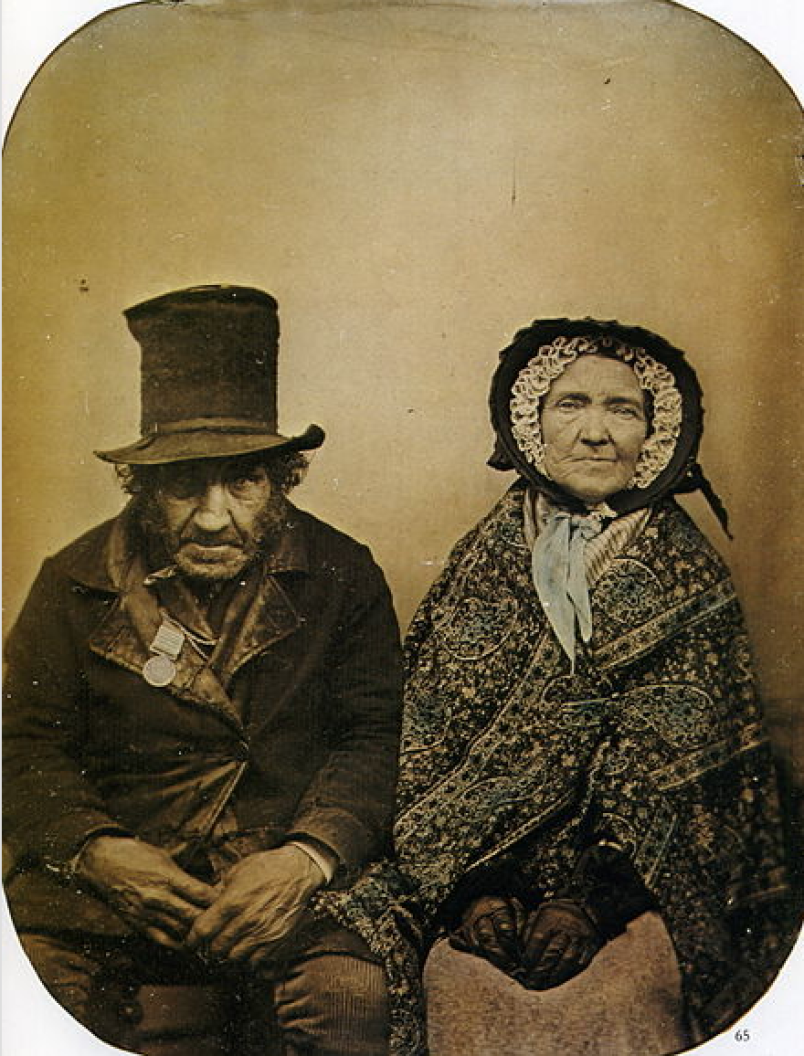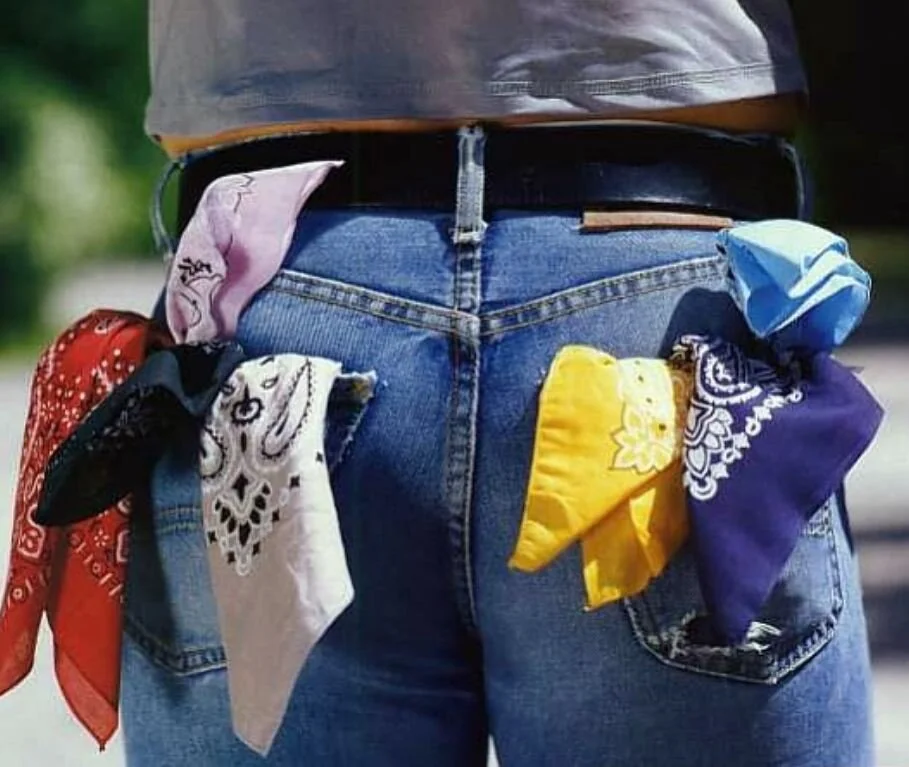The Paisley Leaf and Rock n Roll
When you see a Paisley print, what do you think of? Do you think of the town in Scotland which gave it the name? Do you think of the sixties with its flamboyant prints? Or do you think of the cowboys out in the midwest with their handkerchiefs? The symbol that we now call Paisley has had a much longer history.
It has travelled the silk routes from East to West, adorned the bandanas of cowboys and bikers, been adopted by the 19th Century bohemians, popularised by the Beatles, and has become an emblem of Rock ‘n’ Roll. In this blog we look at how the symbol took its name from a Scottish town.
Paisley and Psychedelia is to do with the retro revival of Victorian, art nouveau styles in the early 1960s as a backlash against the purity of clean simple modernist approaches. Going back to the past was in part a heresy to the future-oriented values of modernism, as well as psychedelia being deliberately ‘over decorated’ and frivolous.
Image courtesy of The Los Angeles County Museum of Art. Small ornaments thought to represent a grain and bush formed the shape of what is today known as a Paisley leaf.
Rewind to a couple of millennia, during the agricultural revolution, in 4000 BC, the date palm tree was cultivated in Mesopotamia, Iraq. In 3000 BC valuable jewellery was found in the Royal Cemetery, Iraq, belonging to a Puabi (a woman of great importance).
During the Mughal Empire, it was taken to Agra, India. In 1050 the Kashmir Shawl originated (Not paisley decorated). However, paisley patterned shawls became popular in 1575.
The Mughal empire covered most of India during 1600 – 1700 (Chronology of Paisley can be found here) and from 1757–1858, the Brits enjoyed Company rule in India.
Other research suggests that the shape represents an assemblage of a floral spray and a cypress tree, which is a Zoroastrian (one of the world’s oldest extant religions) symbol of life and eternity. All research suggests the Paisley leaf originated in Persia.
During the height of the British Empire the British saw India as an investment opportunity. Rule over India guaranteed new revenue streams. During this time we took clothes, spices, textiles and other items to sell for profit. Imagine never having seen other visual art except for English and then visiting the Great Exhibition of 1851 where displays of Indian art and design were everywhere.
Queen Victoria, Prince Albert and three of their children at the Indian Pavilion of the Great Exhibition, oil painting, Prosper Lafaye, 1851-1881. Museum no. P.9-1966
The fig or almond-like form of the Buta (Persian) was the key symbol of the Mughal Empire. Imports from the East India Company in the first half of the 17th century made the Butah and other Indian patterns popular. These oriental designs were printed onto pots, jugs, rugs, shawls, and all sorts of other artefacts and textiles.
During this time, the people in charge of the V&A believed that Indian handmade design was unquestionably better than British factory made design. Ironically this was at the same time that the British administration in India was attacking and dismantling Indian textile production in order to allow British factory products to be exported to India, so there were a few double standards!
– Frances Robertson, Lecturer at the Glasgow School of Art.
More shawls can be found here
Paisley, Paisley
In British colonial fashion we adopted the design and thereby renamed the Butah, the Paisley after a Scottish town.
Paisley, in West Scotland, was a centre for textiles and this is where paisley designs were produced during the industrial revolution. In fact, The Scottish town is now bidding to be UK City of Culture for 2021.
Arthur Lasenby Liberty was an early enthusiast of paisley in the UK (Credit: From the book Liberty of London Treasures: Colour, Design, Print by Carlton).
From around 1800 to 1850, the weavers of the town of Paisley became the most prominent producers of Paisley shawls by weaving in the design to their material. By the 19th century, the paisley pattern was being printed, rather than woven, onto other textiles.
A British Veteran of Waterloo and his Wife. Taken around 1850.
The Paisley in India
Woodblock printing the onto textiles was and still is the main method for mass producing in India. It is a slow process but often results in innovative solutions that you can not get with weaving. The process is necessary to create designs for the Indian caste dress and as well for modern Indian style.
Indian Woodblock
Woman doing Block Printing at Halasur village, Karnataka, India.
Contemporary production and use of block prints, along with the social and historical roots of the craft are outlined in the book ‘Block printed textiles of India: Imprints of Culture, Erward, Eiluned (2017)’. Further reading on block printing can be found here. You can buy wholesale Paisley blocks here.
The Paisley Leaf and Rock ‘n Roll
“One should either be a work of art or wear a work of art,” said Oscar Wilde, who loved nothing more than to lounge in a silk paisley smoking jacket. Wilde and his friends loved the paisley pattern because it symbolised opulence and was a status symbol. Could this also mysteriously be linked to the pattern’s original meaning of it being a symbol of life and eternity? Who knows; we love the idea that nothing ever has meaning until you give meaning to it and that the success of the pattern could simply be down to it being pretty to look at.
After two dramatic world wars, Fashion had a resurgence. The Paisley became identified with psychedelic style. It was worn by the Beatles and the style was particularly popular during the Summer of Love in 1967
Prince paid tribute to the rock and roll history of paisley when he created the Paisley Park Records recording label and established Paisley Park Studios.
Paisley Park Studios
The hanky code (also known as a flagging is a system) was invented by Gay and Bisexual men in the 1970s. They are all decorated with the Islamic influenced Paisley leaf and are now used among queer communities and male casual sex seekers or BDSM practitioners in the United States, Canada, Australia and Europe, to indicate preferred sexual fetishes. Hanky codes let observers know what kind of sex they are looking for; dominant or submissive.
The immortal print has recently been enjoying yet another peak of fashionability at the catwalks of London, New York, Milan and Paris, which have all seen a flutter or flash of it in recent seasons. It’s also used widely on corporate ties, so yea, a very potent symbol in many different subcultures and classes.
Gucci, 2016
Nice tie, Sugar.

















